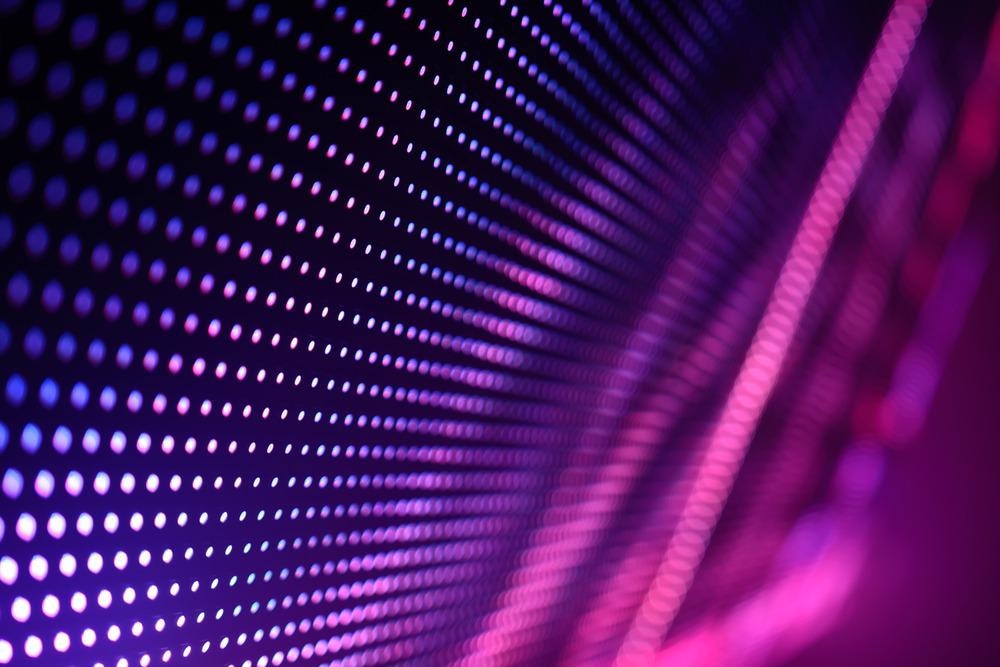In an article published in the journal The Journal of Physical Chemistry C, it was discovered that solvent reactiveness might influence the emitting characteristics of compounds generated via a one-pot solvothermal process.

Study: Green Switching and Light-Harvesting Abilities of Red-Emissive Carbon Nanodot. Image Credit: Ash Pollard/Shutterstock.com
The Advent of Photoluminescent Carbon Nanodots
The discovery of photo-luminescence (PL) reliant on excitation energy from nano-sized carbon-based particles has reinvigorated the pursuit of bio-compatible, solution-treated, and photo-luminescent carbon-based carbon quantum dots (QDs).
There are several publications on the methodologies for producing these photo-luminescent dots, often referred to as carbon nanodots (CNDs), which are dissolvable in water.
Their possible uses include hydrogen gas generation, LEDs, intra-cellular co-localization, and increased photosynthetic reactions, among others.
The PL of the documented CNDs is very responsive to the solvents and precursors utilized in the specific production approach. The discharge of these carbon nanodots may be readily modified by loading with N, S, and other elements, providing a color gamut.
Owing to the lack of availability and ambiguity in the structural properties of the CND and the method of chemical loading, the push produced by the CND for breaching the photochemical theory – Kasha-Vavilov's law – could not gain momentum.
Keeping this in view, the advent of PL independent of excitation energy calls into question the fundamentals of the most well-known CNDs. The word nano in carbon nanodots refers exclusively to solid-phase structural properties, not discharge properties in solutions.
Precursors Used for the Study
In combination with thiourea or with amines, Citric acid is a common precursor utilized in the fabrication of CNDs. As a result, the team picked citric acid along with ammonium thiocyanate to be used as precursors in their study.
Solvothermal interactions of specified precursors were performed in two distinct solvents: dimethylformamide (DMF), which is highly responsive, and methanol, which is comparatively inactive. DMF has the remarkable capacity to participate in processes such as a nucleophile or an electrophile. Furthermore, it may supply several sorts of basic components, like CHO, CO, etc.
Why Use Citric Acid?
To date, it has been demonstrated that solvothermal reactions of citric acid with relevant precursors result in carbon-based QDs with several emission spikes encompassing the whole visible RGB spectrum. Furthermore, red- and green-emitting materials have economic value as possible luminescent protein indicators.
Challenges Associated with Carbon Nanodots Derived from Citric Acid
Owing to the low photo-stability and intrinsic difficulties in tracking the product creation process, determining the molecular genesis of red- and green-emitting carbon dots derived from citric acid has continued to be a tough challenge so far.
Important Findings
In this study, the team used an appropriate separating approach to segregate the emitters generated in the solvothermal interaction of ammonium thiocyanate and citric acid. The use of borax improved the photo-stability of the produced compounds. The responsiveness of the solvents was discovered to be a determining factor in the production of polyaromatic hydrocarbons.
Consideration of emitting properties and characterization data implied that the products were molecular in nature. The green emitter was recommended to be the aromatic pyrrolo-citrazinic ring, while the red emitter was proposed to be the pyrrolopyrano-dicitrazinic ring.
The time-resolved, steady-state emitting characteristics of compounds in clean solvents implied that they do not obey a universal energy gap rule but instead exhibit reverse solvatochromism.
In a cationic surface-active agent (cetyl trimethyl ammonium bromide), agglomeration of the red-emitting substance caused by the surface-active agent was observed. The enhancement of the emitting parameters of the compounds (lifetime and quantum yield) on the micellar surface indicated electrostatic separation from the bulk of the water.
Highlights of the Study
In this study, the never-before-seen solvent-administered transformability of a red-emissive substance was demonstrated. This switching substance had several properties in common with the green-emitting substance made in methanol-based medium. This data verified the developing molecular crystal concept and gave a reason for molecular buildup from green- to red-emitting substances.
Since the produced molecules used covalent bonding to attach to protein and bovine serum albumin, they might be useful in luminescent-protein marking. A hybridized photosynthetic setup composed of chloroplasts and a red-emitting product was developed to successfully lower the electron acceptors in Hill reactions.
The red-emissive product and chloroplast had weak reduction capacity towards ferricyanide on their own; however, a conjunction of the two showed a better reduction rate towards ferricyanide.
Reference
Pal, S. K., Kanrar, B. B., Yogeshwar, P., & Panda, D. (2022). Green Switching and Light-Harvesting Abilities of Red-Emissive Carbon Nanodot. The Journal of Physical Chemistry C. Available at: https://pubs.acs.org/doi/10.1021/acs.jpcc.2c01303
Disclaimer: The views expressed here are those of the author expressed in their private capacity and do not necessarily represent the views of AZoM.com Limited T/A AZoNetwork the owner and operator of this website. This disclaimer forms part of the Terms and conditions of use of this website.